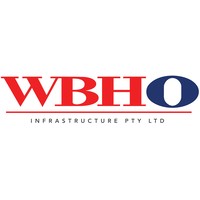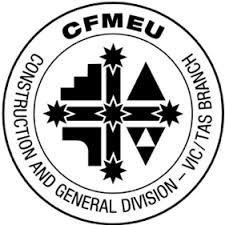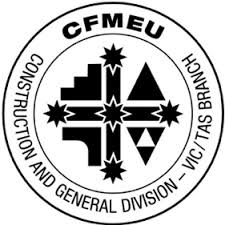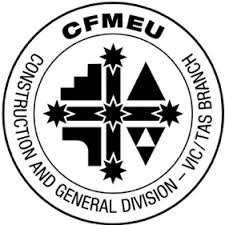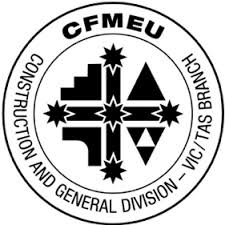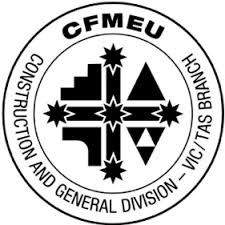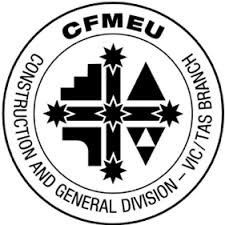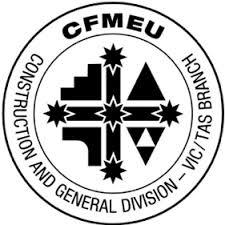Title Page
-
Conducted on
-
Prepared by
-
Location
Management Responsibilities
-
Is there a health and safety management plan for the project/site? (OHS Regs 5.1.16).
-
Do the contents of the plan specify who is responsible on behalf on management for health and safety; the arrangements for managing health and safety incidents on site and any site specific health and safety rules? ( OHS Regs 5.1.17)
-
Is there a full and comprehensive site specific OHS&E induction, that explains (in the appropriate language/s) all facilities of the site, the site emergency procedures, full contact details of management personal in case of emergencies and the appropriate responsibilities of management personal on the site? (OHS Regs 5.1.17)
Emergency Procedures and protocols?
-
Is the plan site specific?
-
Is there a map notifying where to muster in an emergency evacuation?
-
Is an Emergency Plan prepared and implemented at the workplace? (OHS Act Sect 21 & Workplace Amenities and Work Environment Compliance Code WorkCover 2008).
-
Are the correct emergency wardens listed on the plan?
-
Is the plan displayed in prominent locations around the site?
-
Has the plan been tested for its effectiveness and relevance to the site layout and conditions?
Traffic Management
-
Is there a site specific Traffic Management Plan in place?
-
Are traffic controllers trained and qualified (Road Management Act 2004)?
-
Have traffic controllers completed an appropriate refresher course (within last three years)?
-
Controllers are wearing correct PPE?
-
SWMS have been prepared and followed? (OHS Regs 5.1.9)
-
Worker fatigue is monitored and managed with regular breaks and rotation?
Site Requirements
-
Is signage displayed with relevant builder contact details clearly visible from outside the workplace?
-
Is the site secure to prevent unauthorised access?
-
Have all the necessary permits been obtained? (Council, EPA, WorkCover, VicRoads etc)
-
Do all workers on site hold general construction induction cards? (OHS Regs 5.1.20/21/22)
-
Have workers been site inducted? (OHS Regs 5.1.17)
-
Are induction records kept on site available for viewing?
-
Are all visitors inducted into site-specific hazards and risks (e.g. Contaminated soils, contaminated waters, asbestos, lead...)
Personal Protective Equipment
-
Have workers been supplied with the appropriate PPE for the work they are performing?
-
Have workers been supplied with the appropriate PPE for the work they are performing?
-
Is the PPE maintained, repaired and replaced as needed?
-
Are workers wearing the required PPE as stated by the site requirements
Work Areas
-
Is there safe access and egress to and from work areas, both under normal conditions and an emergency? (OHS Act 2004 - Section 21(2) c & 23 (1) ).
-
Are there walkways to separate workers from moving plant?
-
Are access routes free of obstructions and stored materials?
-
Is access to and from work areas adequately lit? (40 lux)
-
Are work areas adequately lit? (160 lux)
-
Are work areas adequately lit? (160 lux)
-
-
Amenities
-
Are there adequate amenities for all workers on site?
-
Are there covered walkways to access amenities in the event of inclement weather?
-
Are toilets clean, hygienic, well lit and easily accessible?
-
Are workers required to change in and out of clothes?
First Aid
-
Is there adequate first aid facilities at the workplace? (Victorian OHS Act (2004) Section 21(2) d.
-
Are first aid locations clearly marked?
-
Are there enough trained first aiders, minimum 1 for every 25 workers?
-
Is there a first aid room?
-
Is the first aid kit regularly checked and restocked?
-
Are first aid records kept on site?
Electrical Provisions
-
s electrical equipment tested and tagged before first use and thereafter once every three months as per Industry Standard (Victorian WorkCover Authority) Electrical installations on construction sites (2011).
-
Are records kept of all testing and tagging? (AS/NZS 3012-3.1 and Industry Standard)
-
Are leads no longer than 30m? (AS/NZS 3012)
Falls from Heights
-
Has a SWMS has been prepared where a worker can fall 2m or more? (Vic OHS Regs (2007) 5.1.5).
-
Has a risk assessment been performed for all other work at heights?
-
Is the highest control measure in the hierarchy of control being implemented?
-
Are the control measures continually inspected and maintained?
-
Is hand rail securely fixed as per engineering requirements and the relevant manufacturers specifications?
-
Is hand rail (a minimum of) between 900mm and 1100mm high and contains a mid rail and toe-boards or mesh infill? <br>
Ladders
-
Are all ladders rated for industrial use only of at least 120kg? (AS/NZS 1892)
-
Are ladders only used as a means of access and egress or light duty work of short duration?
-
Are ladders only used as a means of access and egress or light duty work of short duration?
-
Are three points of contact maintained at all times?
Scaffolding
-
Was scaffolding with a deck height of 4m or more, or any scaffold erected where there is a fall or drop of 4m or more, erected by a person with a high risk (scaffold) licence (AS 4546: 1995-Guidelines for Scaffolding & Victorian WorkCover Authority High Risk Licence requirements)?
-
Has scaffold been inspected and signed off prior to use and thereafter every 30 days (AS4576)?
-
Is scaffold erected on firm, level ground?
-
Have compatible and approved scaffold components been used?
-
Is regular maintenance and inspections carried out by a licensed scaffolder?
-
Are records are kept on site of all inspections and sign offs?
-
Is there safe access and egress to and from working platforms? (AS/NZS 1576 3.6)
-
Are ladders/stairs in good condition?
-
Are incomplete scaffolds appropriately closed and signage installed to prevent unauthorised access?
Cranes
-
Are any cranes in use on site?
-
is the crane set up on stable ground and not over underground services
-
Has all the lifting gear been checked prior to use?
-
Are the chains and slings in good condition and have they been checked and have the approprite tags and are they in date?
-
Do all workers working with cranes and in the lifting of materials, hold the relivant high risk work licence to do so?
-
Have the prestart checks been done on the item of plant?
-
Are there any workers working under a suspended load?
Powered Mobile Plant
-
Is there a plant register kept on site?
-
Are maintenance and inspection records of the plant available (OHS Regs 3.5.20)
-
Is the Plant only being used for the purpose for which it is primarily designed for?
-
Does the operator/installer have appropriate license/competency to use/operate the plant (if required)?
-
Are log books kept and up to date? (OHS Reg 3.5.20)?
-
Are reverse alarm and warning devices fitted? (OHS Reg 3.5.35)
-
Has all mobile plant been inducted in the 3D system?
-
Have all mobile plant been fitted with fire extingushers and have first aid kits?
-
Is there a spotter present with each item of plant?
-
Is the spotter in positive communication with the machine operator?
-
Is the spotter standing in the safe zone? (safe distance of operating plant)
Piling
-
Is the piling rig set up on flat and stable ground and away from underground services?
-
Are the operators of the piling rig compitant and hold the required high risk work licence to operate this piece of plant?
-
Is the item of plant been inducted into the 3D safety system?
-
Have the prestart checks been done for this item of plant before work commencement?
-
Are there exclusion zones set up around the piling rig with the approprite signage in place?
-
Has fall protection been installed around the pile hole or excavations?
-
If the piling rig is set up in close proximity to power lines, is it futher than 3 metres away?
-
Concrete Pump
-
Is the concrete pump set up on flat and stable ground and away from underground services?
-
Are the operators of the concrete pump compitant and hold the required high risk work licence to operate this piece of plant?
-
Is the item of plant been inducted into the 3D safety system?
-
Have the prestart checks been done for this item of plant before work commencement?
-
If the concrete pump is set up in close proximity to power lines, is it futher than 3 metres away?
-
Are their any workers, working under the extended boom?
-
Is there a spotter inplace to reverse the concrete trucks to the concrete pump?
-
Are all maintenance records including thickness tests for the pipeline redilily accessable?
-
Are the pipe clamps inspected prior to use?
-
Excavations
-
Is there approprite access ans egress into excavations?
-
has it been battered in 1.5 metre intervals?
-
Is shoring being used correctly?
-
Is there a emergancy responce plan devoloped for the task?
-
Has the area been baricaded off to stop unortherised entry into the area?
-
Is the approprite signage inplace?
-
Has a excavation permit been completed prior commencement of the task?
Demolition
-
Is there any demolition of a structure or part of a structure that is load-bearing?
-
Have all demolition works been signed off by a engineer prior commencement of works?
-
Does the demolition contractor hold the appropriate competences ? (i.e. UNLIMITED. /. MEDIUM RISE - work restricted to a maximum of 5 storeys, excluding special buildings. /. LOW RISE - work restricted to buildings of not more than 2 storeys) as per legal requirements from the Victorian Building Authority.
-
Is a Demolition Work Plan in place (AS 2601 Clause 2.3)?
-
Pre-Cast
-
Are precast panels being used on site?
-
Are the panels delivered on site at least 72 hours old since casting (Precast Industry Standard: Clause 7.2)?
-
Are the lifting insert testing certificates available (Industry Standard Clause 4.8)?
-
Are rigging diagrams detailing required lifting/placement configurations supplied with the shop drawings on site (Industry Standard 4.3)?
-
Are all panels individually marked with a permanent identification number on the manufacturers certificate of compliance (Indystry Standard 5.17)?
-
Is the rigging/ erection crew made up of the following (minimum requirements): Nominated rigger in charge being the holder of an advanced or intermediate high risk rigging licence; at least one additional certified high risk licence rigger (basic); at least one dogger (for slinging load/panel on the delivery truck), crane operator holding the appropriate high risk licence for the type of crane used during the panel erection; carpenter for any set-out issues (Industry Standard). <br><br>(The rigger in charge should be familiar with the Industry Standard Industry Standard - Clause 8.7).
Enviromental
-
Has there been an environmental audit (as per EPA requirements) conducted on the site?
-
Has the audit been carried out by an approved environmental auditor (as per EPA requirements)?
-
Is there an Environmental Management Plan in place? (ISO 14001)
- Yes
- No
- N/A
-
How compliance with environmental legislation will be achieved?
-
Does the plan include Information/instructions on how contractors must meet their obligations?
-
Are there procedures for dealing with environmental emergencies?
-
Are the procedures reviewed and updated in the plan?
-
Is there a truck and concrete washout?
-
Are there control measures to avoid the release of contaminates into waterways/drainage systems?
-
Are there, cattle grids and street sweeping to prevent mud and dirt on the roadways?
-
Sediment control barriers/filtration for drains?
-
Are the subcontractors using, dust suppression measures (e.g. Water truck/s; hose/s...)?
-
Is there a speed limit on site to lower dust generation?
-
Is there gravel on haul roads and high traffic areas?
-
